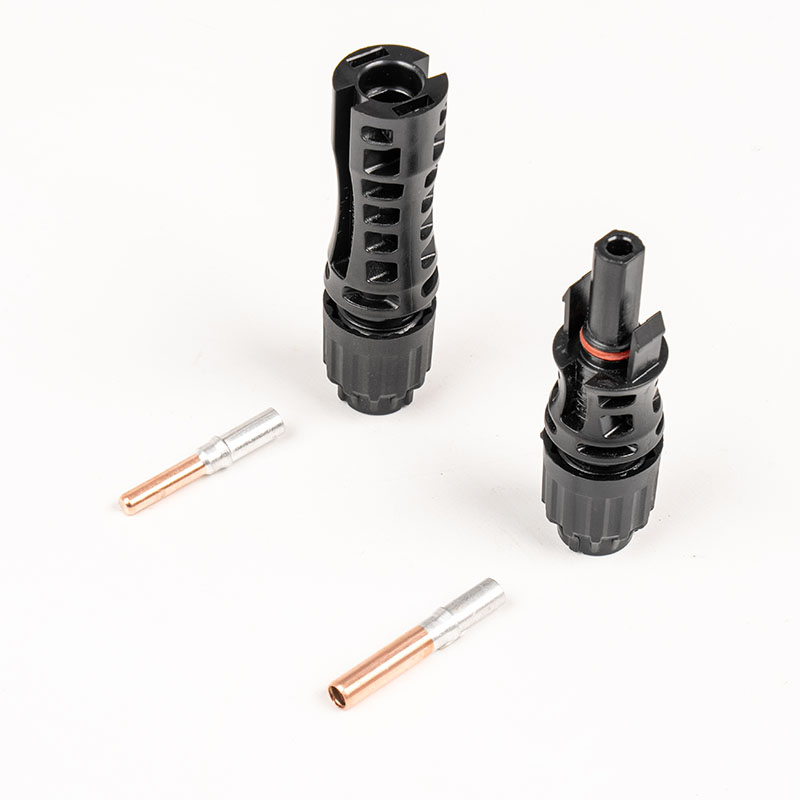Solar Panel Connector is an important component of any solar panel installation. It is responsible for connecting solar panels to the inverter, which converts the DC power generated by the solar panels into AC power that can be used in homes and businesses. A high-quality solar panel connector ensures optimal performance of the solar panel system, while also reducing the risk of fire and other safety hazards.

What are the different types of solar panel connectors available in the market?
There are primarily two types of solar panel connectors: MC4 and T-connectors. The MC4 connector is the most popular type and is compatible with most solar panels available in the market. T-connectors, on the other hand, are used in some specialized solar panel systems.
How to install solar panel connectors?
Installing solar panel connectors is not a difficult task and can be done by following a few simple steps. Firstly, strip the solar panel wires and connect them to the male and female connectors. Make sure that the wires are properly inserted into the connector and that there is no exposed wire. Secondly, use a crimping tool to secure the connector to the wires. Finally, use a multimeter to test the connection and ensure that there is no voltage drop.
How to connect solar panel connectors?
Connecting solar panel connectors is also a simple process. Start by connecting the male connector to the female connector, making sure that they are pushed together firmly. It is important to note that the connectors should only be connected when the system is not generating any power.
What are the common mistakes to avoid when installing solar panel connectors?
One of the most common mistakes made when installing solar panel connectors is using the wrong type of connector. It is important to ensure that the connectors used are compatible with the solar panel system being installed. Another mistake to avoid is using connectors that are not certified by the relevant safety agencies. This can increase the risk of fire and other safety hazards.
In conclusion, the proper installation and connection of solar panel connectors is crucial for the optimal performance and safety of any solar panel system. By following the correct installation procedures and using high-quality, certified connectors, you can ensure that your solar panel system operates at maximum efficiency and remains safe for years to come.
At Ningbo Dsola New Energy Technical Co., Ltd., we specialize in providing high-quality solar panel connectors and other components for solar panel systems. With years of experience in the industry, we are committed to providing our customers with the best products and services available. For more information, please visit our website at https://www.dsomc4.com/ or contact us at dsolar123@hotmail.com.
Research Papers:
Timothy L. Hill and David T.W. Wong. (2020). The potential of solar panel technology in achieving sustainable electricity supply. Renewable and Sustainable Energy Reviews, 123.
Kai Li and Xiaoyu Liu. (2019). Study on Solar Panel Dual-Axis Automatic Tracking System with Self-Charging Function. IEEE Access, 7.
Wei Liao, Yao Zhao, and Xing He. (2018). An Improved Photovoltaic Maximum Power Point Tracking Method Based on a High-Precision FNCF-LLM. IEEE Transactions on Industrial Electronics, 66(12).
Milica D. Ristivojevic and Nadica N. Miljkovic. (2017). Prediction of energy of grid-connected photovoltaic system considering effect of shading on solar panels. Solar Energy, 142.
Xiaoliang Wang, Xiaoliang Wang, and Wenquan Tao. (2016). Temperature measurement of solar panel based on infrared thermal imaging technique. International Journal of Thermal Sciences, 109.
Sang-Hun Lee and Wenping Cao. (2015). A new topology of single-phase transformerless photovoltaic inverters using an isolated DC–DC boost converter for grid-tied applications. Applied Energy, 154.
Shouxiang Lu, Xiaowei Du, and Jianxing Liu. (2014). A Novel Power Control Scheme in Grid-Connected PV System to Improve the Grid Performance. IEEE Transactions on Power Electronics, 29(5).
Marcelo Gradella Villalva, Jonas Rafael Gazoli, and Ernesto Ruppert Filho. (2012). Comprehensive Approach to Modeling and Simulation of Photovoltaic Arrays. IEEE Transactions on Power Electronics, 24(5).
Y. Srikanth and A. Pandiarajan. (2011). An Improved MPPT Solar Charge Controller Using SEPIC Converter Topology. IEEE Transactions on Power Electronics, 26(4).
Markvart Tom and Castaner Luis. (2003). Practical Handbook of Photovoltaics: Fundamentals and Applications. Elsevier.
Armando Antonio Rebollo López and Julio Cesar Ramirez Paredes. (1999). A Cascaded Multilevel Inverter Using Solar Energy as DC Source. IEEE Transactions on Industrial Electronics, 46(2).

